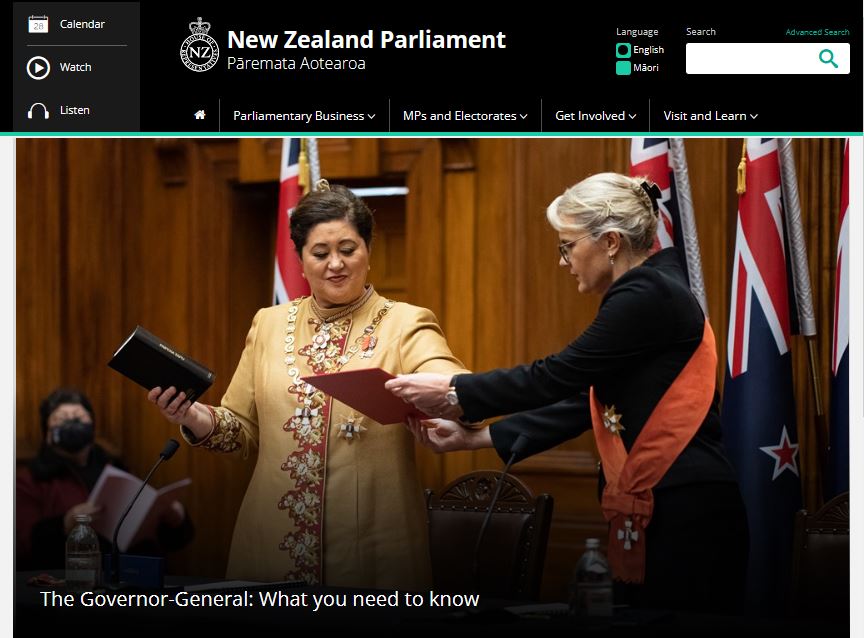
New Zealand’s first female Māori Governor General incorrectly claimed that her earliest predecessor, William Hobson, forged a partnership between the British Crown and Māori in 1840. The brutal truth is that Captain Hobson had enjoined himself with a Treaty Cliqué — that included Queen Victoria — in a conspiracy to wrest paper sovereignty from hapū and iwi by two parallel tracks — a ‘Treaty Theatre Track’ and a ‘Colonial Law Track’.
The significance of the Waitangi Treaty is that the object itself was a literary device in a theatrical production, to inflict a théâtre usurp d’état. The Treaty achieved the appearance of sovereignty cession to Queen Victoria, to ‘justify’ the inevitable military takeover to consolidate substantive sovereignty of the soil.
As a geo-political chess move, the 1840 Waitangi Treaty became a red herring device to divide Māori, confuse subsequent settlers, and distract historians from the Colonial Law Track’s legal instruments deployed to acquire paper sovereignty.
Doctor Think Evil Without Being Evil finds that the official Treaty rhetoric has subtly shifted from the myth of cession to a new myth of partnership, in order to sustain the British Monarchy’s political power over the Realm of New Zealand.
By Doctor Think Evil Without Being Evil

➼ Bunk Founding History Advanced by G-G
At her swearing in ritual, as New Zealand’s 38th appointee to the Vice Regal Office, Dame Alcyion Cynthia (Cindy) Kiro, claimed that her earliest predecessor, William Hobson, forged a partnership between the British Crown and rangatira of hapū and iwi in 1840.
This incorrect view does much disservice to the good people of Aotearoa New Zealand.
Especially, since Dame Cindy Kiro — who is of Ngāpuhi, Ngāti Hine, Ngāti Kahu and British descent — has submitted to the continuance of the head of state, Queen Elizabeth II, heriditary monarch of the Fourth British Masonic Empire.
Kiro — who mentioned her dual Māori and British heritage and her academic and public service background — stated:
“A key chapter of our story as a nation began when my earliest predecessor, William Hobson, forged a partnership between the British Crown and rangatira of hapu and iwi in 1840.”
— Dame Cindy Kiro, Governor General New Zealand
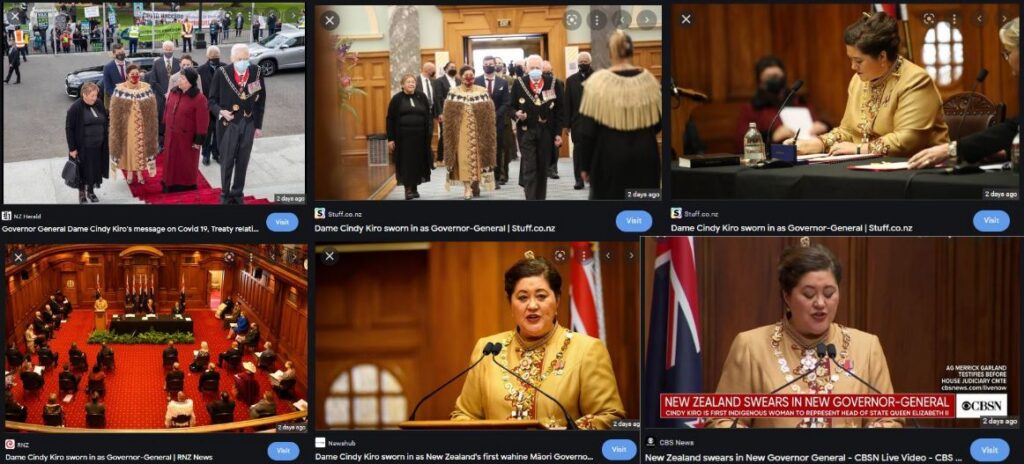
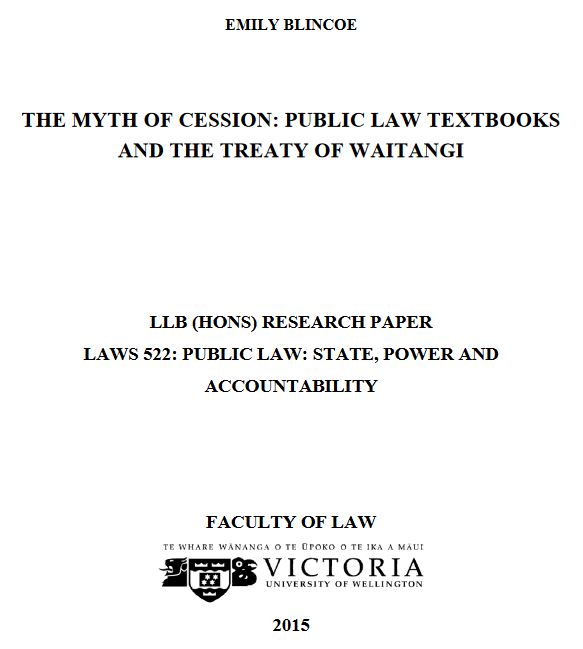
This bunk version of history — which, in effect, simply updates the nation’s founding myth from cession by treaty to a partnership by treaty — has become fashionable among New Zealand’s ruling class, academia and a great deal of Māori and Tau Iwi.
The nebulous New Zealand Crown continues to exploit the gaps in recent historical accounts Treaty literature, and Treaty claim reports — that all fail to grasp how exactly the British take-over of New Zealand occurred in 1839 and 1840.

➼ British Takeover by Two Parallel Tracks
It turns out that the British Crown acquired the islands of Aotearoa New Zealand on the basis of occupation and wrested paper sovereignty by usurpation via a parallel ‘Colonial Law Track’, rather than the 1840 Waitangi Treaty.
The legal instruments included proclamations, new commissions, swearing-in officials, letters patent, legislation, gazetted notices and a royal charter that solidified the establishment of New Zealand as a separate colony of the British Masonic Empire.
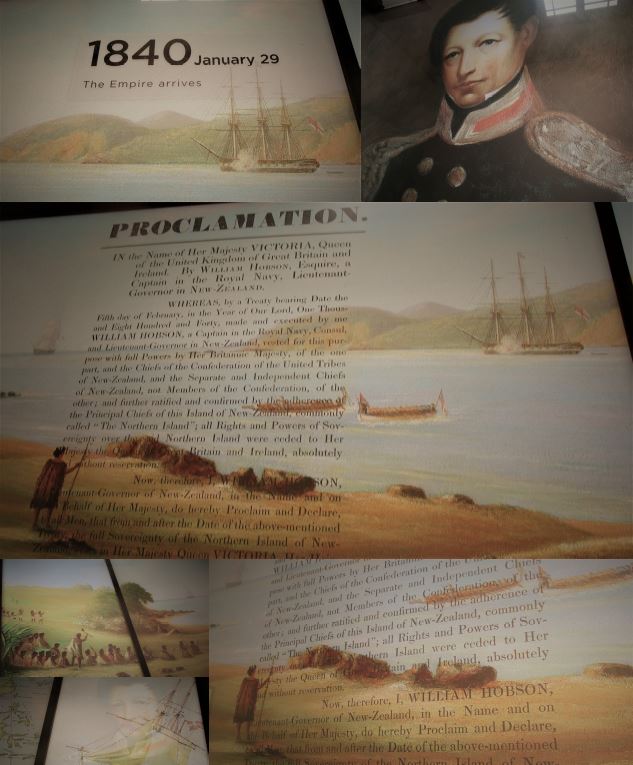
Meanwhile, a Treaty Theatre Track was laid to supply the documentation to create the nation’s founding myth: cession by treaty.
In deed and in design, the 1840 Waitangi Treaty parchments were spun with unseemly speed on a fulcrum of deceptive language translation differences, poorly recorded oral promises and a simulation of a ‘sacred covenant’.
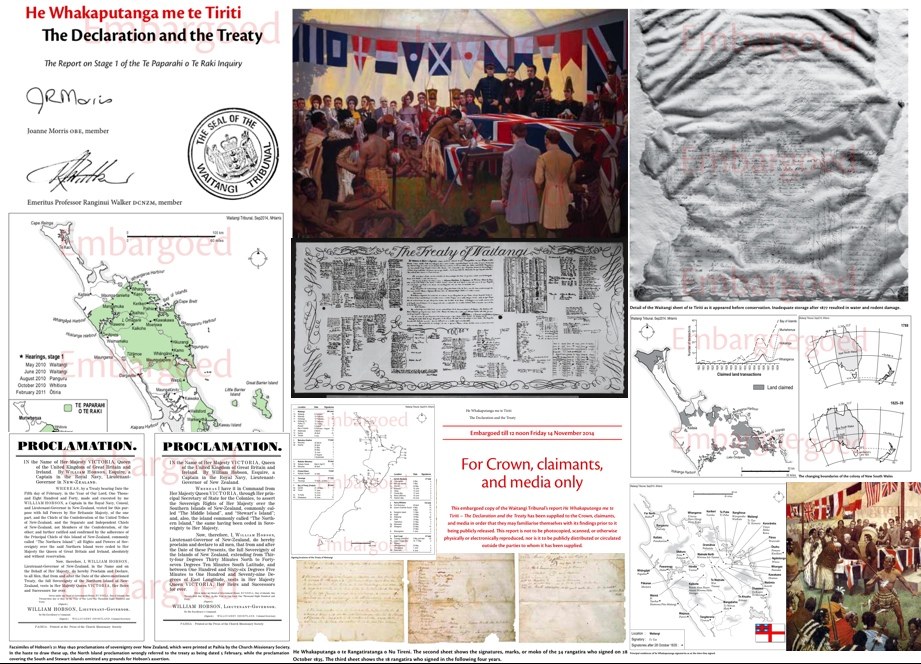
And, in the language of the imperial power, sovereignty was construed to be willingly transferred – as Māori from pā to parliament to prison – all well know.
And – as the Privy Council could only contrive ignorance not to know by now.
A whirlpool — that was sensed by Prophet Penetana Papahurihia after the first signings of the 1840 Waitangi Treaty, which would keep Māori captured in its torgue for beyond 200 hundred years until a time when the truth would be commonly known and the legacy of hidden tricks over-turned – has been tracked back to its occult source in my illustrated essay, “Deep History of Waitangi: The Queen Victoria Connection”.

I prove Britain’s acquisition of New Zealand on June 15th 1839 by Letters Patent of Boundary Extension, was the mechanism to initiate a series of legal instruments that were deployed along a Colonial Law Track to usurp paper sovereignty.
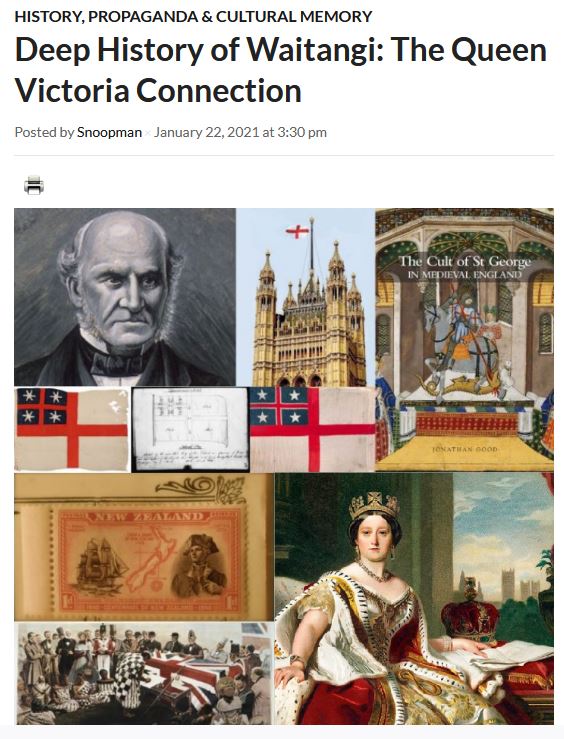
With the callous trickery, an ingenious théâtre usurp d’état was orchestrated to switch between two parallel tracks, that involved a travelling Treaty Theatre Production, and which spun on a fulcrum of language translation differences, with cultural disparities between written and oral agreements.
The simulation of a sacred covenant was ‘marketed’ with the persuasive manipulation of Protestant missionaries, whose emotional hijacking acted as ‘powerful auxiliaries’ – as expected – to leverage Captain William Hobson’s direction of a Waitangi Treaty Cliqué.
This stealthy operation, authorized by Buckingham Palace, weaponized the physical dimension of time to wrest control of another territory on the grand chessboard.
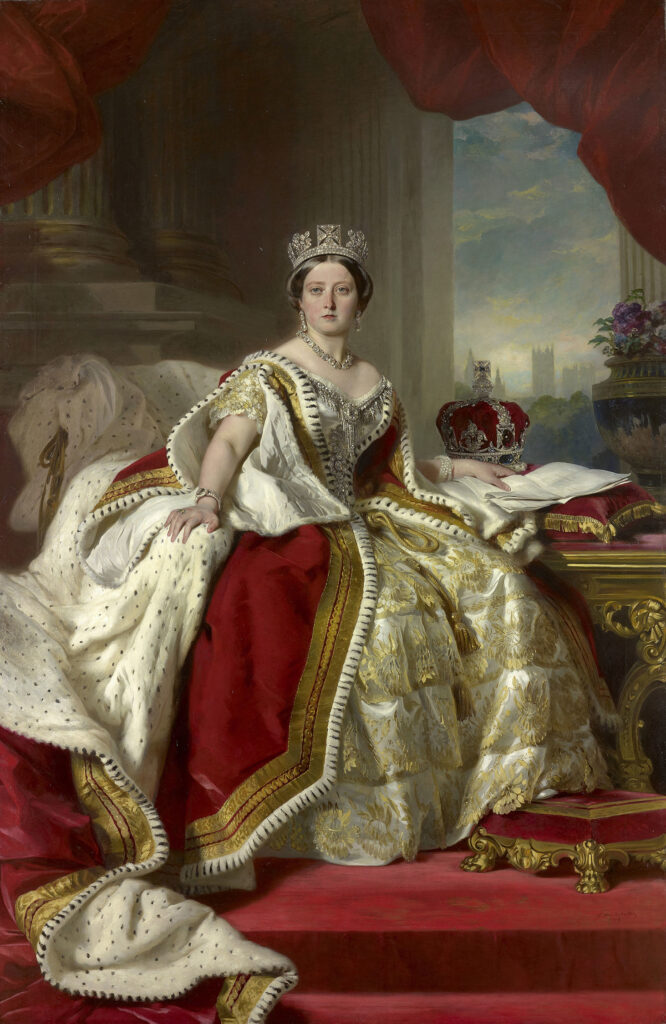
In 1839, by her royal seal, Queen Victoria authorized the perfect power crime of statecraft with the novel twist of swindling full sovereignty from an entire indigenous people by pen-quill, parchment paper and treaty theater for the expansionist British Masonic Empire.
New Zealand was acquired by the British Empire on the basis of occupation on June 15th 1839, when the South Pacific archipelago became a dependent colony of New South Wales, and therefore paper sovereignty was wrested by usurpation.
This parallel track was detected by Norman Arthur Foden, whose 1938 work — The Constitutional Development of New Zealand in the First Decade (1839-1849) — proved that New Zealand was acquired on June 15th 1839 by the British Empire on the basis of 2000 Britons settled in New Zealand.
By means of a Letter Patent device to erect a dependent colony, the British Crown adopted the unauthorized British settlements, and therefore the usurpation of sovereignty was wrested through subsequent Colonial Law Track legal moves.
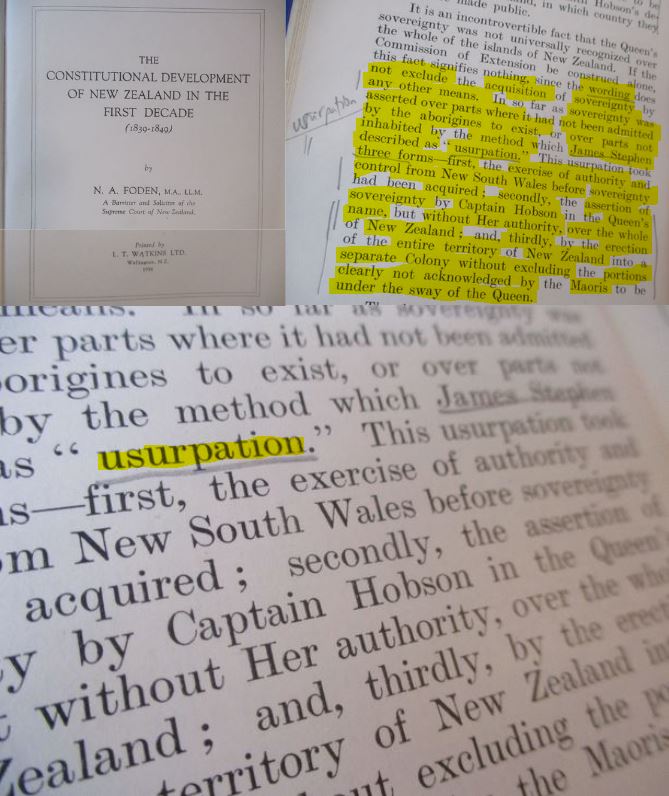
But, the British takeover of New Zealand still required trickery.
More precisely, a théâtre usurp d’état was opted for, in which a cliqué formed to orchestrate, in essence, a Treaty Theatre Production Company that would script the trickery, hire a theatrical troupe and commandeer improvisational actors to assist in the mission to persuade.
To this devious end, Hobson’s Commission was authorized on 30th July 1839 by Lord Normanby on Her Majesty’s Command at the Court of Buckingham Palace, with the device of Letters Patent. The method of acquisition was neither stated in this Letters Patent of 30th July 1839, nor in the Letters Patent for Boundary Extension, dated 15th June 1839.

The origins of the Treaty Theatre Track can be traced back to June 1831 when future British Resident James Busby essentially outlined his dream job description to make treaties with Māori.
Britain’s first official, James Busby, incrementally drew rangatira into British jurisdiction. First, by conning chiefs in 1834 to select a flag of national shipping that displayed England’s orientalist St George’s Cross, to save them from the maw of British Maritime Law. Two Māori ships had been impounded at Port Jackson, Sydney, for failing to fly a national flag.
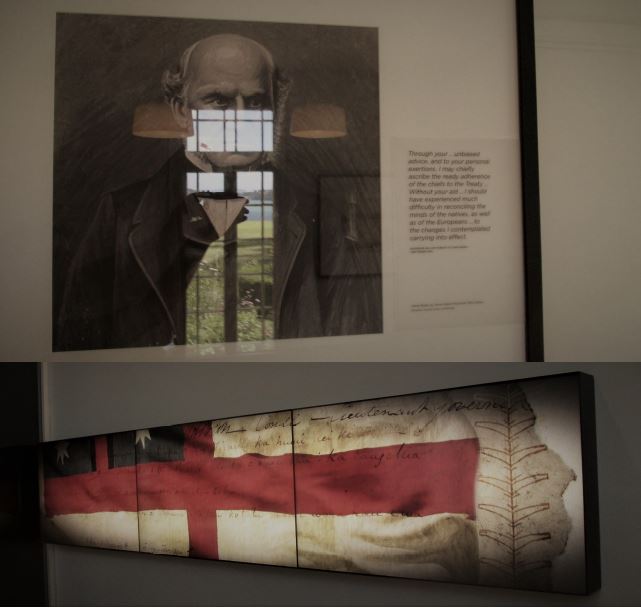
Second, Busby gained the cooperation of 12 chiefs to assist in the first official British-endorsed land confiscation, eviction and village razing by fire in 1834, which established a parcel of land named England, after antagonizing Chief Rete by bossing him and his hapū around about how to conduct their logging commerce.
And then, thirdly, Busby conned rangatira to sign the 1835 ‘Declaration of Independence of the United Tribes of New Zealand’, to create the edifice of an ‘independent state’, for its later deconstruction.
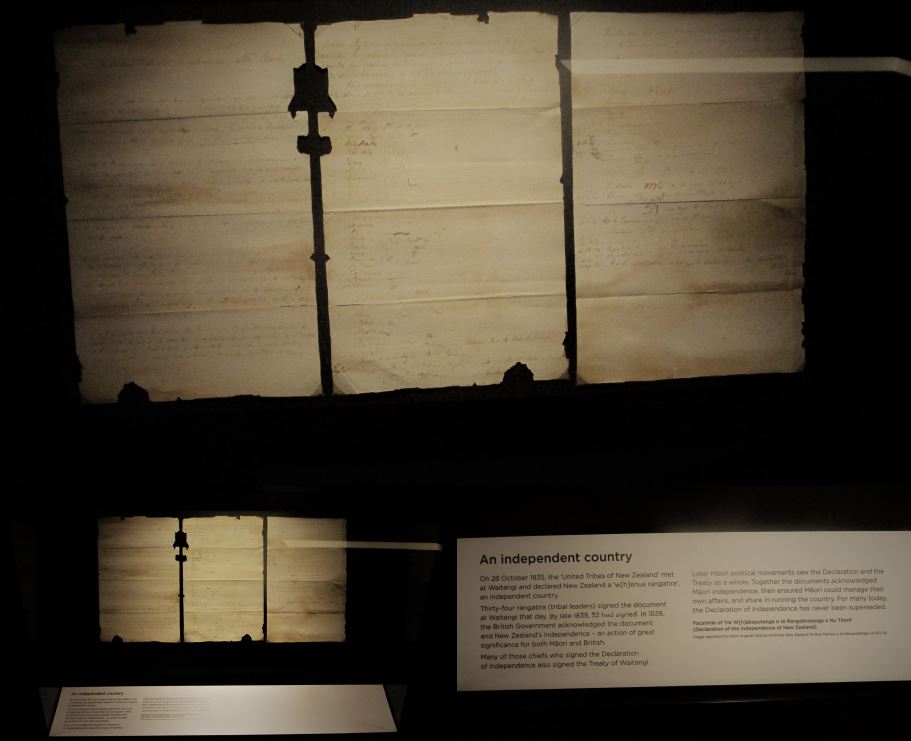
Indeed, the 1835 ‘Declaration of Independence’ was designed to lure Māori chiefs into a British Protectorate jurisdiction, and to forestall French missionary influence, as part of a long-game to perfect the incomplete title claimed by Freemason Bro. Captain James Cook, by stealthily gaining full paper sovereignty by a hidden track.
Whereas, the Colonial Law Track was the primary route through which the completion of the annexed title claimed by Freemason Bro. Captain James Cook actually occurred. Indeed, the ‘Endeavour Voyage’ in 1769-1770 was New Zealand’s first travelling theatrical production, while the Waitangi Treaty Theatre was the second big budget show staged to distract, divide and defeat.
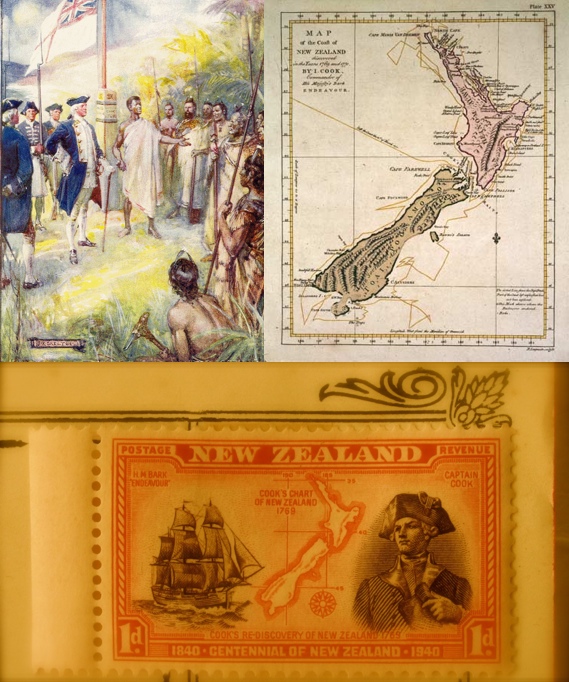
Meanwhile, the legal mechanics of the heist occurred by a parallel track.
The key pieces of parallel Colonial Law Track laid to the Treaty Theatre Track to gain British paper sovereignty were:
(1) a Letters Patent of Boundary Extensions activated by Royal Prerogative Powers, dated June 15th 1839, which expanded the jurisdictional boundary of New South Wales to include all of New Zealand;
(2) a Letters Patent of Amended Commission to Governor George Gipps making him Governor of New Zealand, a new dependent colony of New South Wales, signed by Her Majesty’s Command bearing Lord Normanby’s name on July 30th 1839;
(3) Governor George Gipp’s Proclamation of January 5th 1840 establishing N.Z. Customs;
(4) Gipp’s three Proclamations of January 14th 1840 notifying the extension of the boundaries of New South Wales to include New Zealand, Captain Hobson’s Commission as Lieutenant-Governor and a notice that land Sales after January 5 1840 would not be valid and land sales before that date would be subject to official scrutiny;
(5) Captain Hobson’s Proclamation of January 30th 1840 declaring himself as Lieutenant-Governor in an Anglican chapel, Christ Church, in Kororāreka before 300 settlers and 100 Māori;
(6) Lieutenant-Governor Hobson’s Proclamation of May 21 1840 claiming sovereignty over the North Island on the basis of cession by Treaty and over the South Island on the grounds of Cook’s Discovery;
(7) the New South Wales Continuance Act (or the “New Zealand Act of 1840”) with a separation empowering clause to sever New Zealand from its status as a dependency of New South Wales without expressly naming New Zealand, was passed in the NSW Legislature on 16 June 1840 as 3 Vic No 28;
(8) in Westminster, London, the New South Wales Continuance Act was passed on 7 August 1840, with a severance empowering clause to erect a separate Colony of out of those islands considered as Dependencies of New South Wales;
(9) Ratification of Hobson’s sovereignty Proclamation of May 21st 1840 in the London Gazette on October 2 1840, after they were received in London on September 28 1840;
(10) the Royal Charter for Severance (or Charter of 1840), signed by Queen Victoria and dated 16th November 1840 establishing New Zealand as a separate colony upon receipt of the Long Roll of Parchment on November 10;
(11) the Governor’s Commission of 24 November 1840;
(12) the Royal Instructions of December 5th 1840; and
(13) Hobson’s oath as Governor and Commander-in-Chief on May 3rd 1841, which was notification that New Zealand was no longer a dependency of New South Wales.
These moves to gain sovereignty over New Zealand made prior to, during and after the signings of the 1840 Waitangi Treaty were the real means by which the British Crown laid claim to paper sovereignty, and perfected the incomplete ‘First Discovery’ title claimed by Freemason Captain Bro. Cook for the British Masonic Empire.
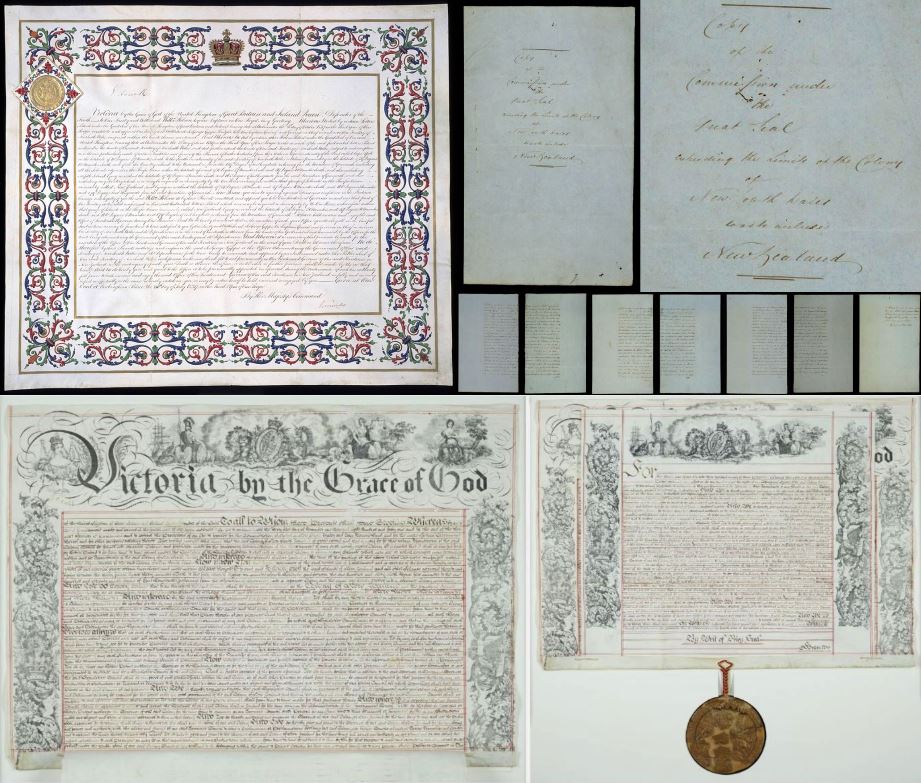
The ruse to gain the appearance of the chiefs ceding sovereignty to Her Majesty at Waitangi on February 6th 1840, can be seen by the date at which New South Wales Governor George Gipps became Governor of New Zealand: 30 January 1840.
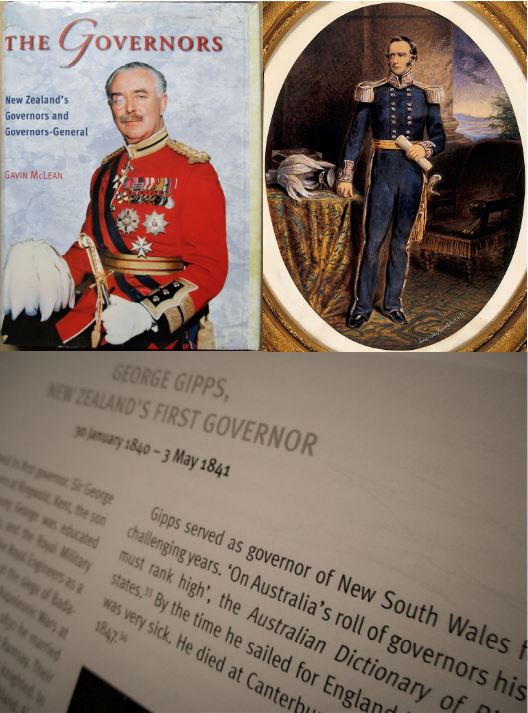
Once Queen Victoria’s Letter Patent of Severance and the Royal Charter of New Zealand were ratified with the Privy Seal of the United Kingdom in mid- November 1840, the British Crown’s title became unchallengeable by British subjects, under English Constitutional Law, and was recognized by other nations under International Law.
British officials in London knew Māori had been swindled of paper sovereignty.
For example, British Parliamentary Under-Secretary of State for the Colonies, Mr R. Vernon Smith expressed his fear that rangatira would soon discover that Queen Victoria’s subjects had gained more than ‘the shadow of the land’.
This unease was a reference to the statements made by Chief Nōpera Pana-kareao of Te Rarawa iwi, who signed the Waitangi sheet at Kaitāia on 28 April 1840, with his wife, Ereōnora. Chief Nōpera Pana-kareao said:
“The shadow of the land goes to Queen Victoria, but the substance remains to us; we have now a helmsman; before everyone wished to take the helm. One said, ‘Let me steer.’, another, ‘Let me steer’, and we never went straight.”
By ‘shadow’, Chief Nōpera meant the British Monarch was extending a protective blanket, while the capacity to control sovereignty over the soil was held by rangatira at the hapū level. Chief Nōpera questioned Wesleyan missionary, William Gilbert Puckey, the night before he signed, in particular about the meaning of the word kawanatanga in the Te Tiriti o Waitangi. Maori chiefs were persuaded to think that Hobson would only be a Governor over the British people, while rangatira would remain in control of their affairs.
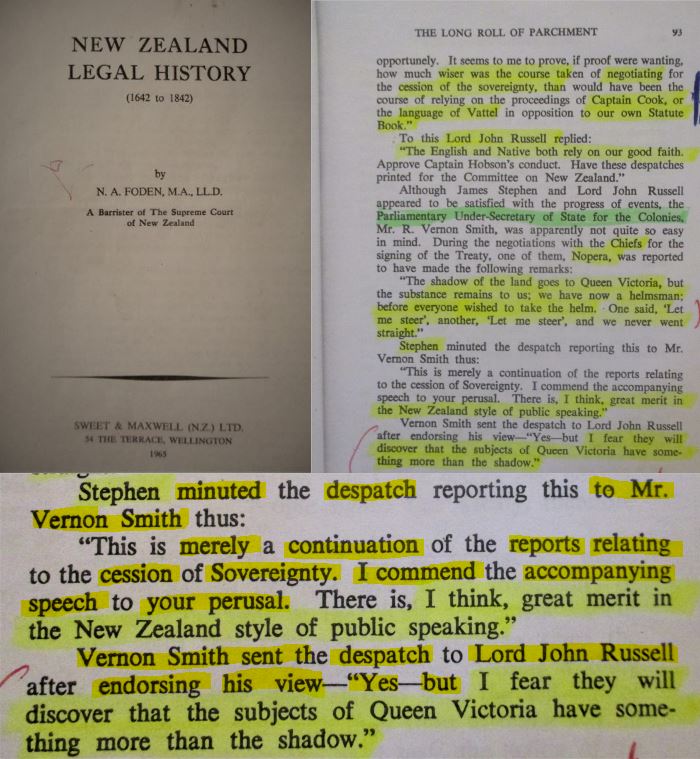
Moreover, Māori at Waitangi were unaware that a secret piece of international law, known today as the Doctrine of Discovery, was applied during the 1840 Waitangi Treaty Theatre. This Discovery Doctrine was ‘transported’ on both tracks, and intersected briefly at Waitangi, where time had been weaponized to gain control over a new territorial-jurisdictional space for the British Masonic Empire.
Scholar Professor Robert J. Miller identified ten Doctrine of Discovery elements in his 2006 book titled, Native America, Discovered and Conquered. The ten Doctrine of Discovery elements are: (1) First Discovery; (2) Actual Occupancy and Current Possession; (3) Preemption/European Title; (4) Indian Title; (5) Tribal Limited Sovereign and Commercial Rights; (6) Contiguity; (7) Terra nullius; (8) Christianity (9) Civilization; and (10) Conquest.
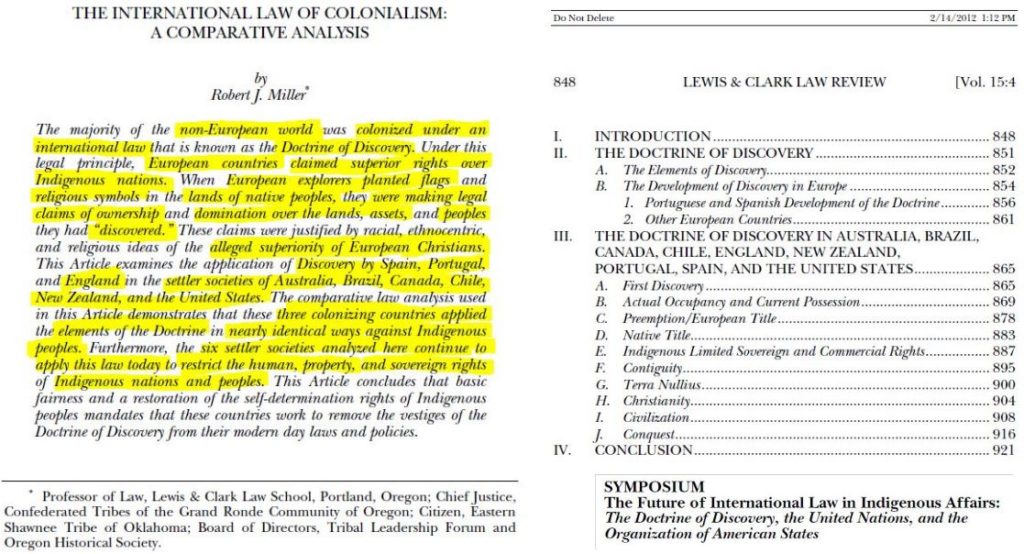
This addition to colonization scholarship provides the analytical tools to categorize the phenomena, the mindset, motives, and modus operandi. As such, these Discovery elements are identified in my illustrated essay, “Deep History of Waitangi: The Queen Victoria Connection” — as they surface.
Indeed, these Discovery Doctrine elements are present in the circumstances, texts and intent of the 1840 Waitangi Treaty, as well as the earlier 1835 ‘Declaration of Independence’. The Discovery Doctrine sub-field supplies a sharpened lens to explain why the 1840 Waitangi Treaty as a so-called ‘compact’ or so-called ‘agreement’, between two peoples had no in-built longevity from the colonizing power’s perspective – except as a mechanism that purported the territory had been willingly ceded without coercion to the British Monarchy in the English language version.
To the key people present who were fluent in both languages, the deception that sovereignty would be lost in translation was obvious. The confidence trick rested on the fact that Māori were not fluent in English at that time. The ruse could not work, if anyone spelt out to Māori that the respected Reverend Henry Williams, as chief scribe of the Māori language version, had switched words to hide the swindle of sovereignty – as Mike King’s documentary, Lost in Translation, makes clear.
Indeed, in the lengthy 217-word sentence that comprises the Preamble of the English version, Queen Victoria was alleged to have extended “Her Royal favour” to invite the Aborigines to cede sovereign authority to her, and signaled the formation of Civil Government and also justified this move to avert evil consequences of unregulated emigration. This rambling Preamble stated Her Majesty was “anxious to protect … [the] just Rights and Property” of the “Natives Chiefs and Tribes of New Zealand”.
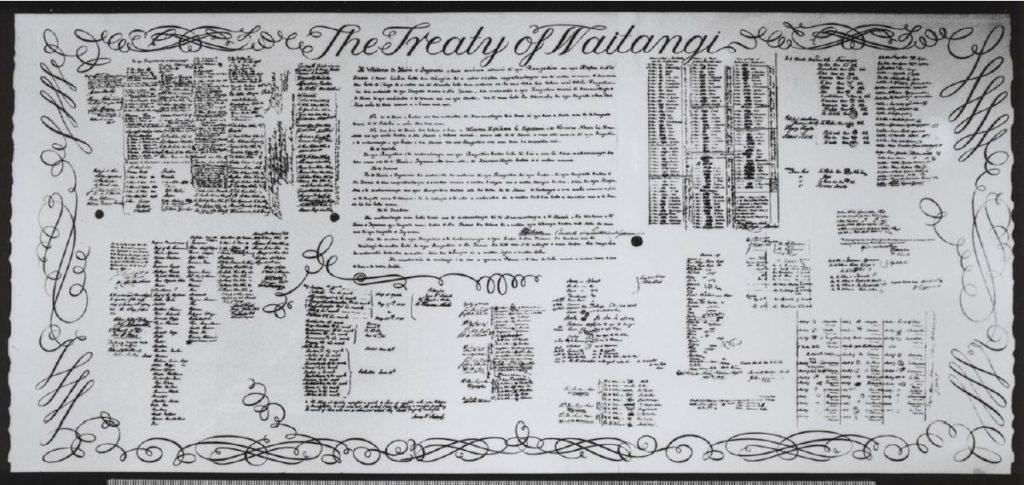
This politically hygienic rhetoric was plagiarized from Lord Normanby’s instructions to Captain Hobson on his mission to Treat with Māori. It would appear that Queen Victoria knew of the plot to swindle sovereignty, because when it came time for the Monarch to authorize the paper heist, this same politically hygienic rhetoric was copied into the Queen’s Royal Charter of November 16th 1840, which erected New Zealand as a separate colony. The Charter of New Zealand empowered the governor to grant lands deemed by European eyes to be waste or uncleared lands to settlers and their corporate bodies, to establish towns, counties and public buildings and other infrastructure.
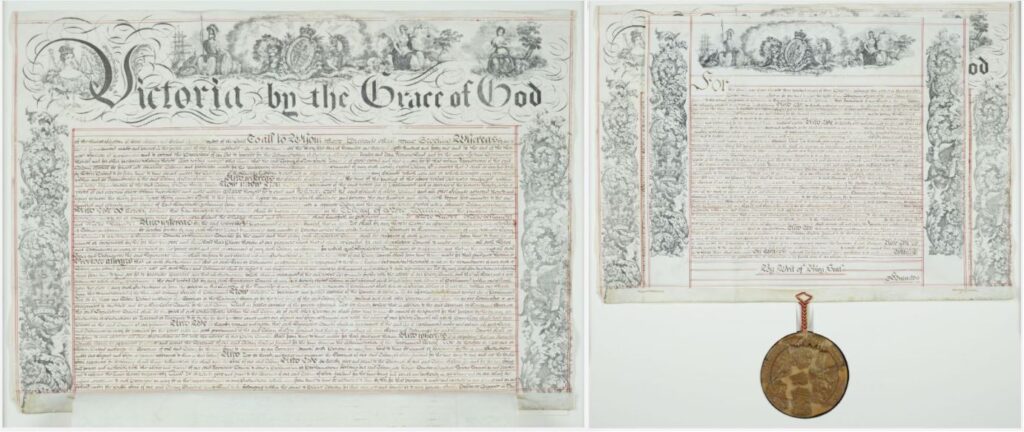
The usurpation that occurred in 1839 and 1840 was a usurp d’état rather than a coup d’état, which is a sudden violent seizure of power of a state. The seizure of power was usurpation since a revolution is the upending of a social order by people already living in the society. This re-framing of what occurred in 1839 and 1840 does not mean a revolutionary dynamic was absent.
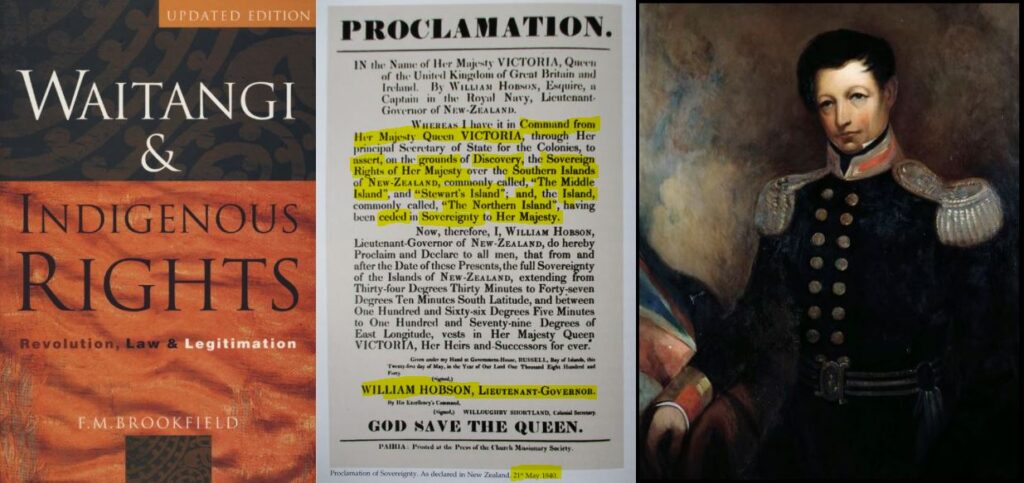
Normanby’s propagandist instructions implicitly ordered Hobson to lie by omission, talk up the benefits and emotionally hijack the rangatira with the novelty of contact, including presents of tobacco and blankets. The details of how exactly they would pull off the epic swindle would be left to that part of the Treaty Cliqué that were in, or would travel to, the South Pacific. The trickery was designed to eventually lead to structural entrapment – to justify a war of sovereignty by construing any Māori who fought back as being in rebellion, since British Freemasons and Protestant settlers would maintain supremacy over the public and private systems of propaganda in Britain and New Zealand.
That structural entrapment would take the form of provoking Māori into reacting to incursions on their sovereignty, lands and customs, and would be the catalyst for the Northern War of 1845-46[40] and the New Zealand Masonic Revolutionary War of 1860-1872.
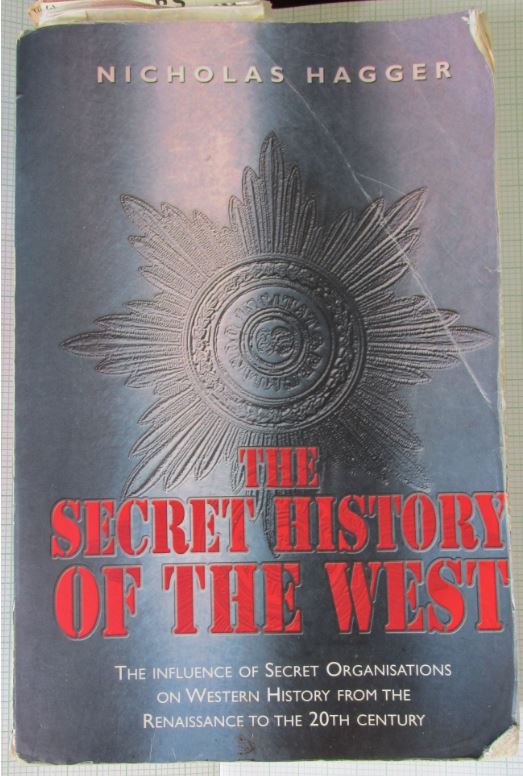
In his epic 2005 study, The Secret History of the West, English historian Nicholas Hagger modelled the patterns of revolutions, how subversive secret Masonic societies plotted them and the reasons for the subterfuge. Drawing upon 550 years of revolutions, Hagger shows that all revolutions have four distinct stages with four archetypal characters. An Occult Idealist expresses a heretical vision, which is given an intellectual expression by an Intellectual Interpreter. A Political Actor takes this blueprint into the political realm, where it is corrupted by the ruling regime, and led by a Consolidator, those secret groups most invested in the occult vision plot physical repression to realize their utopia.
In other words, the violent conflict that became the New Zealand Masonic Revolutionary War of 1860-1872 was the consolidation of stage of a revolutionary dynamic set in motion long before the Waitangi théâtre usurp d’état. As Ranginui Walker correctly observed in Struggle Without End, Governor George Grey was recalled for a second governorship to consolidate the colony at a time when the First Taranaki War of 1860-1861 had faltered for the colonists. Walker, however, was unaware of the hidden Masonic layer of the Christian British Empire that underpinned the New Zealand Masonic Revolutionary War of 1860-72.
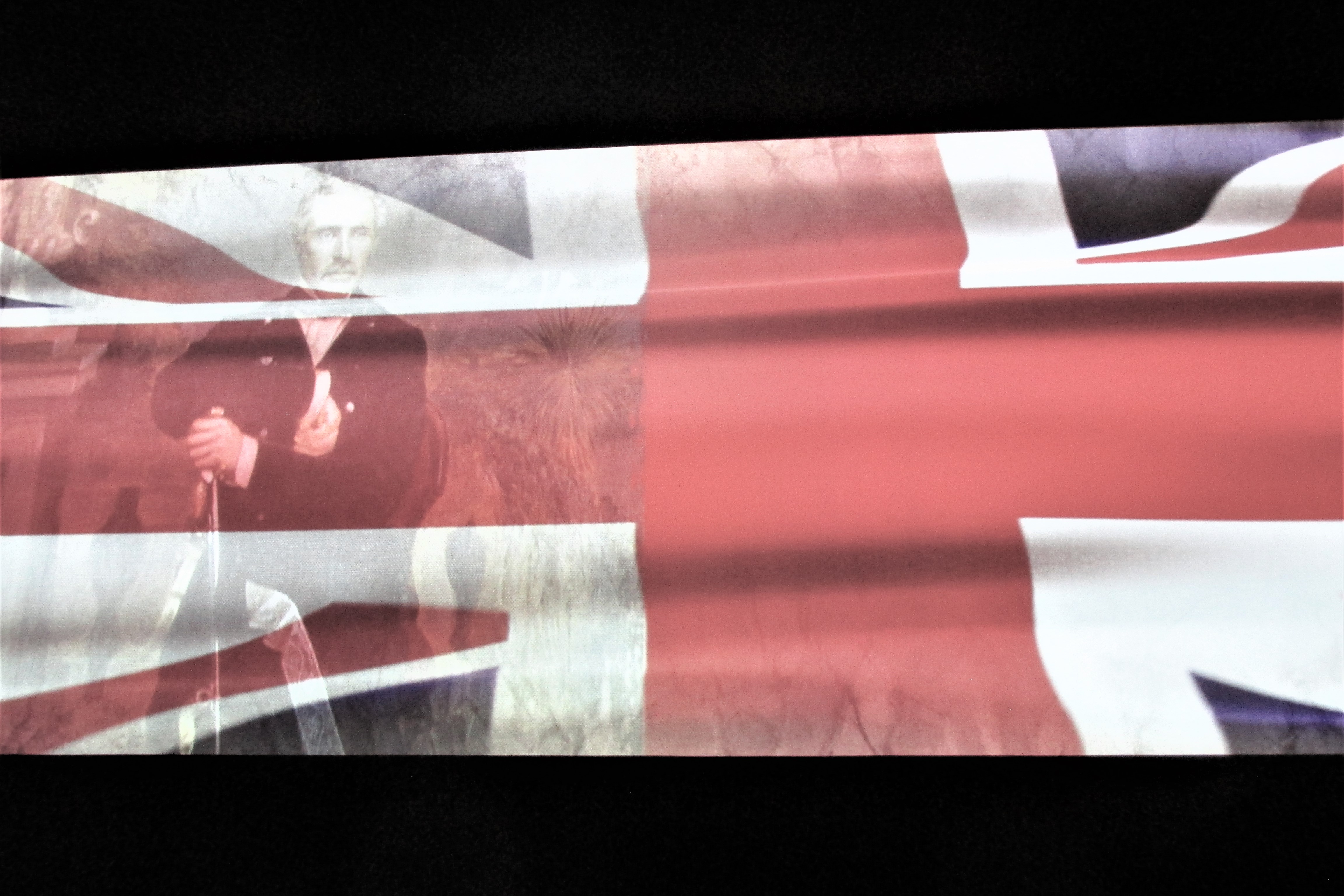
Threfore, the Colonial Law Track was the primary route through which the completion of the annexed title claimed by Freemason Bro. Captain James Cook actually occurred. Indeed, the ‘Endeavour Voyage’ in 1769-1770 was New Zealand’s first travelling theatrical production, while the Waitangi Treaty Theatre was the second big budget show staged to distract, divide and defeat.
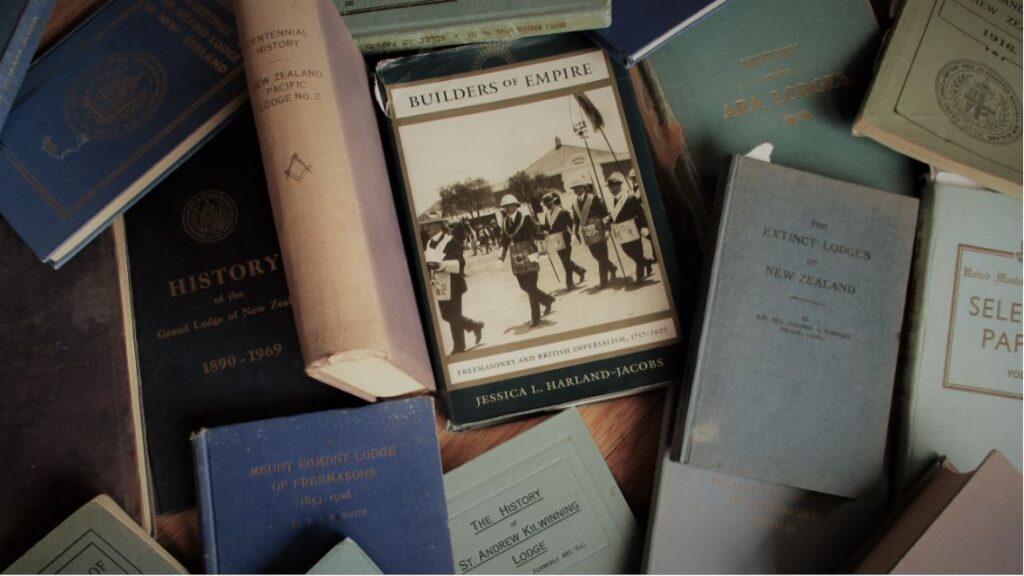
Freemason Captain Bro. Cook had expressed the Masonic occult vision that New Zealand was strategically important due to its geographical location and resources 70 years prior.
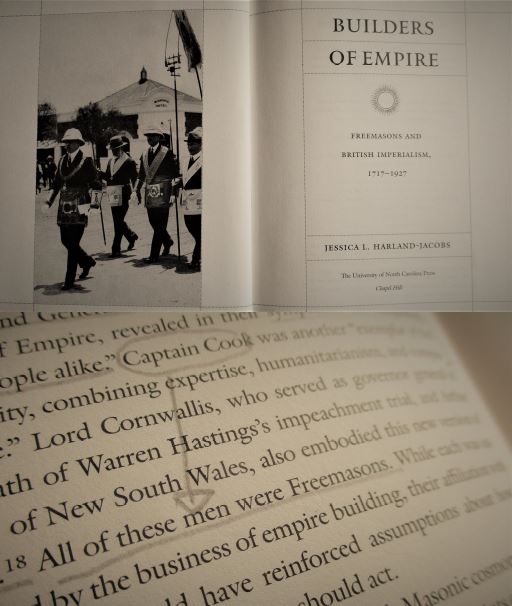
Therefore, an internal revolutionary logic, dynamism and cast of conspiratorial characters underpinned the mission to treat by trickery with the ‘Aborignees’ of New Zealand.

From Victoria to Elizabeth II — Governors Sanitize Waitangi History
The treaty operation was a Deus Ex Machina device to resolve a narrative conflict.
If the British Masonic Empire failed to complete the sovereign title claim to New Zealand, that failure of action would threaten the transmarine empire’s standing.
If however, the British Masonic Empire could win paper sovereignty with innovative theater, its reputation among the pirate sovereigns of Europe and North America as brazen swindlers would be enhanced. Because, the pirate sovereigns of the ‘cannon powers’ would marvel that a cession of territory was construed to have occurred without firing a shot.
While the Treaty Cliqué raced toward the endgame to capture new political space via a sovereignty payload, they acted like a travelling theater company to weaponize the one physical dimension they could control though emotional hijacking, Orientalist swagger and novelty: time.
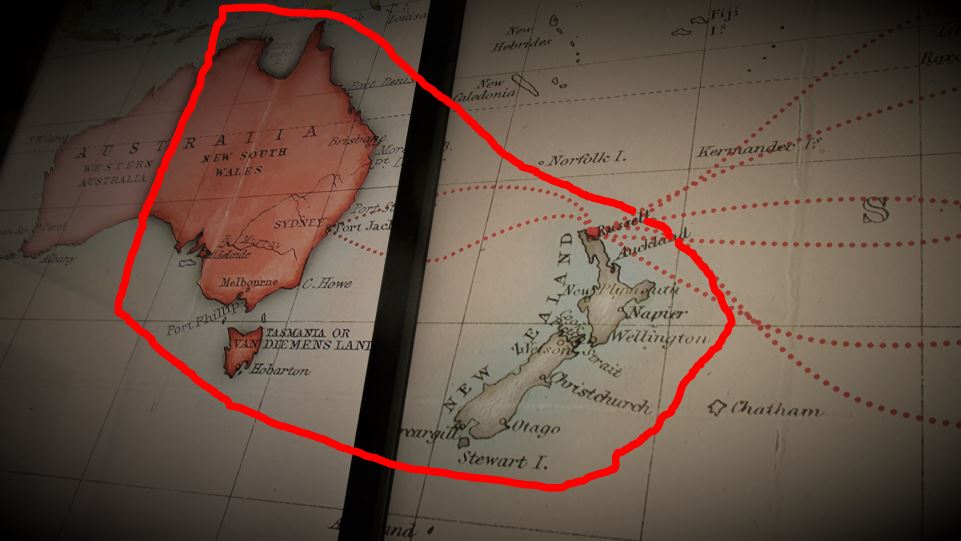
Therefore, the Waitangi Treaty Tour as a theatrical production, or théâtre usurp d’état, that was designed with a red herring construct to distract from the Colonial Law Track. The red herring logical fallacies within and between the 1840 compact bought time while the revolutionary possession was peacefully established, with witting plotting that eventually ‘the natives’ could be construed to be in ‘rebellion’ when they ‘reneged’ on the Treaty.
In the final analysis, the British Masonic Empire acquired the islands of Aotearoa New Zealand on the basis of occupation and wrested paper sovereignty by usurpation.
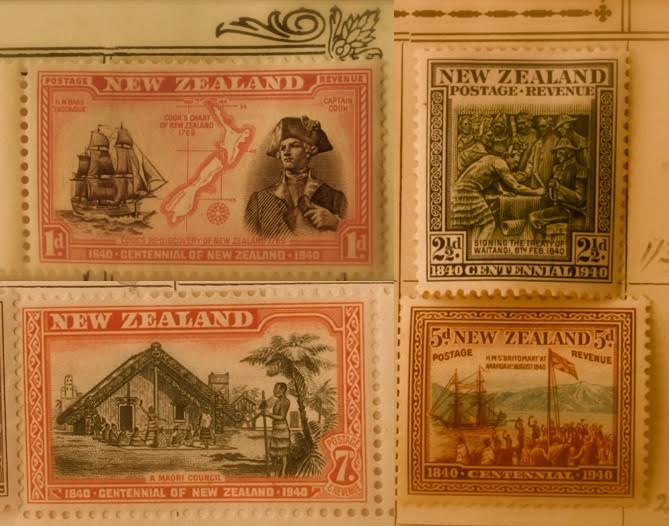
The Treaty Theatre pivoted upon a fulcrum of deceptive translation differences in the 1840 Waitangi Treaty texts that hid the deceptive power crime to win native signatures and paper sovereignty by weaponizing the physical dimension of time.
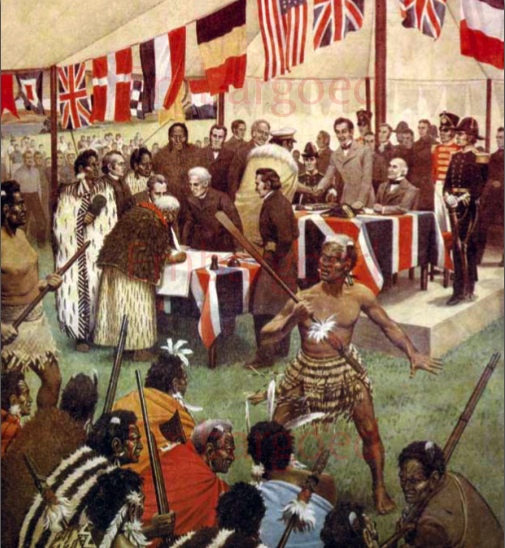
The Treaty would save face for the Monarch, at a time when annexations drew rebuke, by achieving the appearance of sovereignty cession to the Monarch, with the English language version.
The intention was to lead its audience to a false conclusion, whom would not comprehend the Waitangi Treaty Theater was, in effect, a simulation produced to create a copy of reality intended to eventually forge subject race pacification during and after the consolidation stage of what was, in fact, the New Zealand Masonic Revolution.
The incontrovertible fact is that the Waitangi Treaty Signing Rituals were a hostile stage production performed to takeover the Māori nations, or a théâtre usurp d’état. The object itself was a literary device designed to distract from the Colonial Law Track upon which the tenuous claim to sovereign title was first acquired by boundary extension with a Letters Patent and subsequently ratified with a Royal Charter to erect a colony.
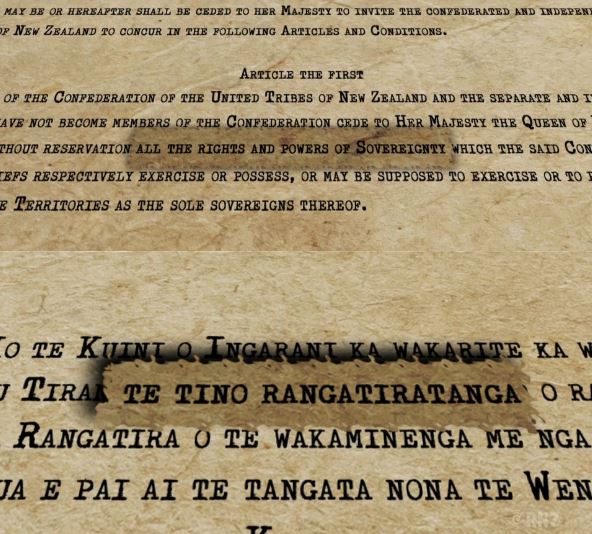
This finding means the 1840 compact was a red herring mechanism to sponsor logically fallacious arguments to hook enough Māori, and – subsequently – divide and defeat the tribal race. The intention was to lead its audience to a false conclusion, whom would not comprehend the Waitangi Treaty Theater was, in effect, a simulation produced to create a copy of reality intended to eventually forge subject race pacification during and after the consolidation stage of what was, in fact, the New Zealand Masonic Revolution.
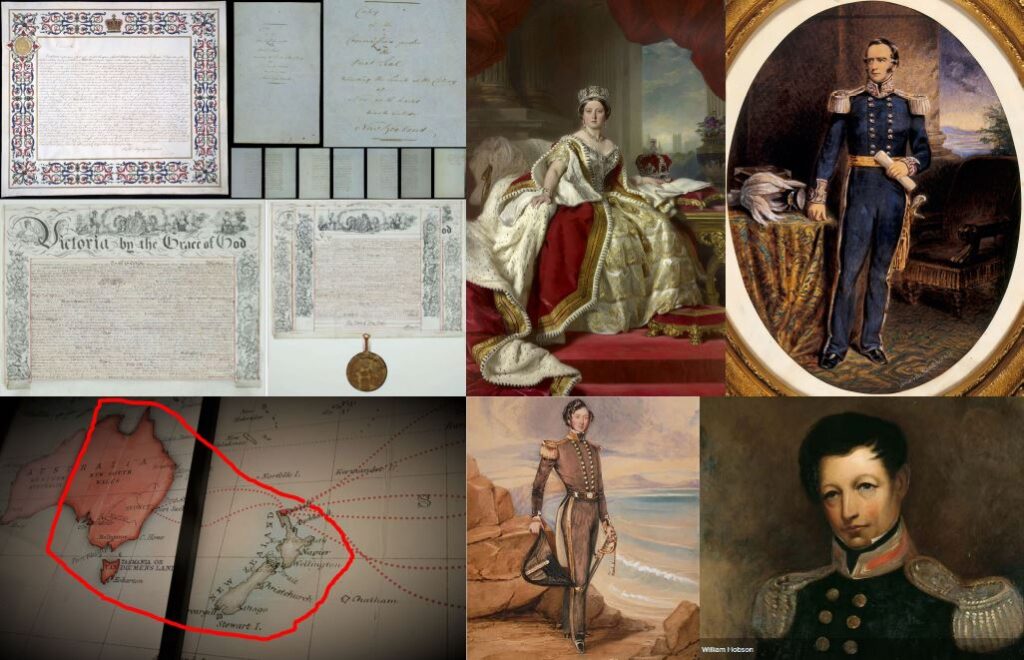
The red herring logical fallacies within and between the 1840 compact bought time while the revolutionary possession was peacefully established, with witting plotting that eventually ‘the natives’ could be construed to be in ‘rebellion’ when they ‘reneged’ on the Treaty.
Thus, the New Zealand Masonic Revolutionary War of 1860-1872 was the consolidation stage of revolution set in motion on June 15 1839 with the Letters Patent of Boundary Extension, which established New Zealand as a dependent colony by acquisition mode of occupation (or settlement), and ratified on November 16 1840 by Letters Patent of Severance and Royal Charter, which erected New Zealand as a separate colony, by acquisition mode of usurpation.
Therefore, the order of sorcery underpinning colonial state formation over the islands of New Zealand is evident from the memoranda, letters patent, commissions, proclamations, legislative acts and a Royal Charter as artifacts of state maneouvuers to forge new Colonial Law Track consistent with English Constitutional Law. Meanwhile, a regime of sematic algebra advanced in a nationwide theatrical production company that would report back a tale of cession of sovereignty over an entire indigenous. In this conjuring of a colony, “cession” no longer meant territory passing between belligerent powers following cessation of armed conflict because the only shots fired was to mark the arrival of Captain Hobson, and his pomp to claim cession.
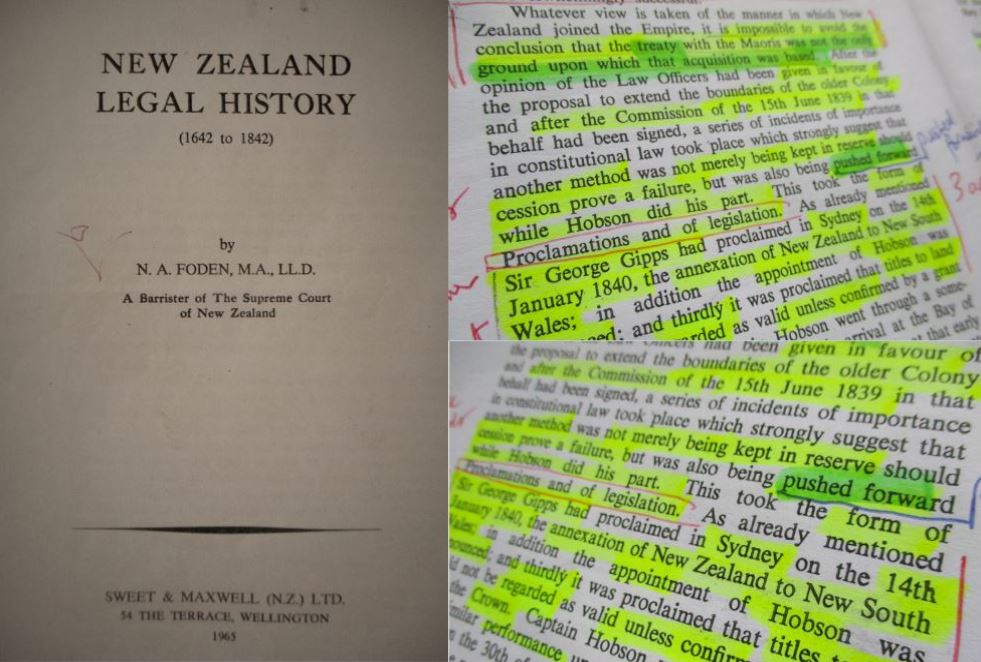
Thus, when Cindy Kiro, claimed this key chapter New Zealand’s founding as a nation began when her earliest predecessor, William Hobson, forged a partnership between the British Crown and rangatira of hapu and iwi in 1840 — her inaugural speech as the Fourth British Masonic Empire’s newest Governor General peddled the politically correct view of this Neo-Feudal era.

This updated sanitized rendition of the New Zealand’s violent state formation by the Second British Masonic Empire (1815-1918), continues to stir the record in the whirlpool sensed by Prophet Papahurihia.
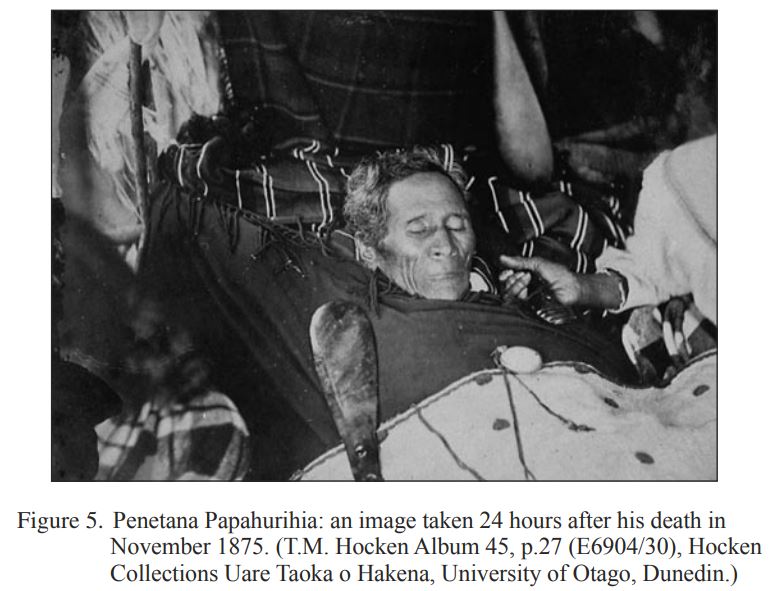
In making his observation after the signing of Te Tiriti o Waitangi, 1840 — Prophet Penetana Papahurihia had the foresight that the torgue Māori were then captured in, would last beyond 200 hundred years until a time when the truth would be commonly known and the legacy of hidden tricks over-turned.
‘The who’, and ‘the why’ of ‘the how’ that whirlpool was stirred has been tracked back to its occult source: London.
This failure assists the Fourth British Empire to maintain its hold over the South Pacific archipelago of Aotearoa New Zealand, as the sole sovereign power, since the inheritors of that long-standing deception are the British Monarchy and their subversive allies.
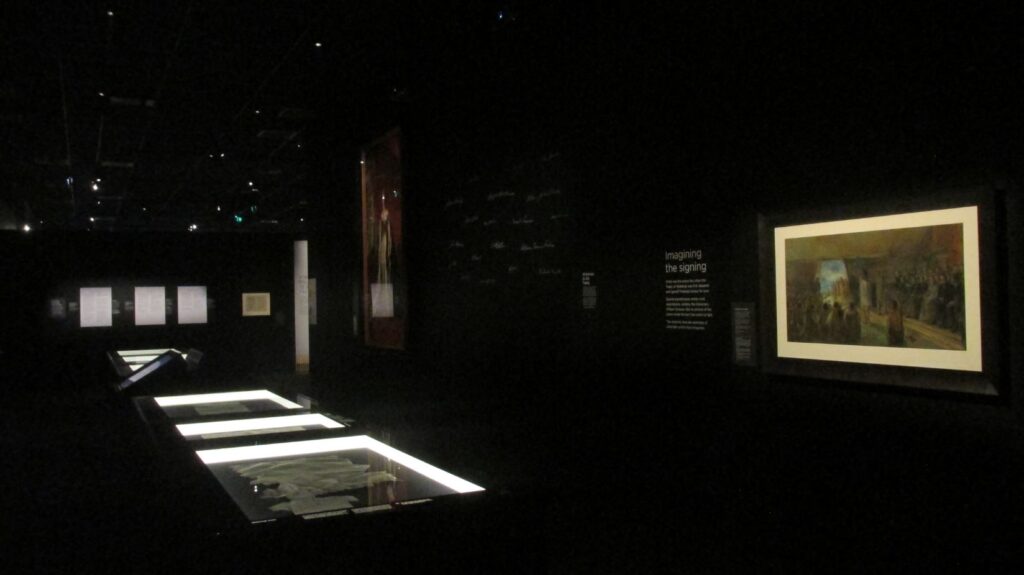
Therefore, it was misleading for New Zealand’s newest Governor General to claim that her earliest predecessor, William Hobson, forged a partnership between the British Crown and rangatira of hapu and iwi in 1840.

Moreover, Captain Hobson enjoined himself with the Treaty Clique — that included Queen Victoria — in the conspiracy to wrest paper sovereignty from Māori and become New Zealand’s second Governor.
Therefore, the official Treaty rhetoric has subtly shifted from the myth of cession to a new myth of partnership, in order to sustain the British Monarchy’s political power over the Neo-Feudal Realm of New Zealand.
With this politically correct rhetoric, New Zealand’s 38th Vice Regal has — in the grand tradition of the Realm’s governors — continued the laundering of this deep history of Waitangi.

=======================
Doctor Thunk Evil Without Being Evil is a Pākehā bat-shit mad ‘conspiracy theorist’, who worked at indigenous broadcaster, Māori Television, for 14 years as an editor of news, current affairs and general programmes. He forged his ‘Thunk Evil Without Being Evil’ super-power while writing his ground-breaking thesis on the Global Financial Crisis (GFC), titled – “It’s the financial oligarchy, stupid”– to figure out the means, modus operandi and motives of the Anglo-American Oligarchy.
Editor’s Note: If we have made any errors, please contact our intern, Steve Edwards, with your counter-evidence.
e: steveedwards555[at]gmail.com
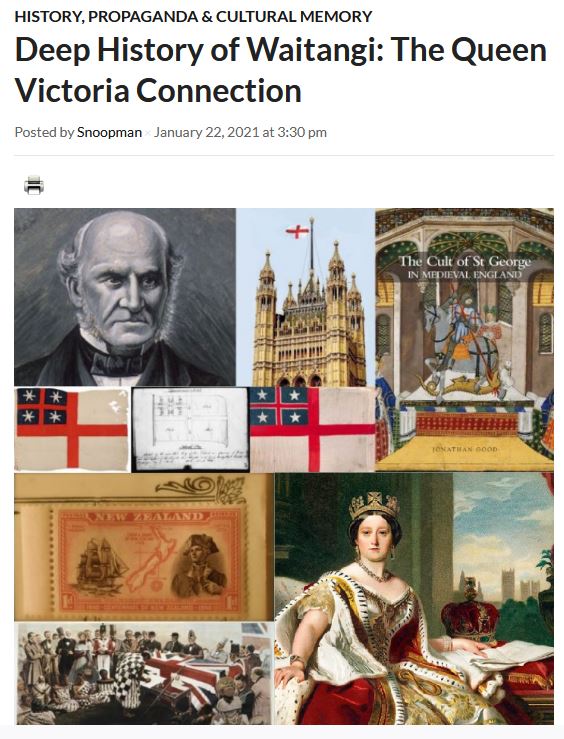
See related: The Masonic New Zealand Wars: Freemasonry as a Secret Mechanism of Imperial Conquest During the ‘Native Troubles’
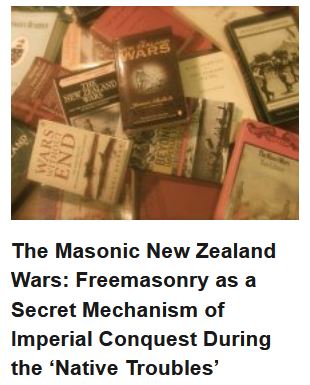
The New Zealand Masonic Revolutionary War of 1860-1872 was the consolidation stage of revolution set in motion on June 15 1839 with the Letters Patent of Boundary Extension, which established New Zealand as a dependent colony by acquisition mode of occupation.

